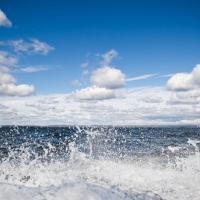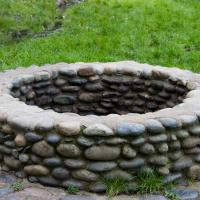SRC Environmental Analytical Laboratories offers a variety of water quality tests to help people, businesses and municipalities identify common bacteria in their water that may pose health issues to humans and animals.
The lab is ISO/IEC 17025 accredited for the following tests except fecal streptococcus*.
Total Coliform and E. Coli
Total coliforms and E. coli are naturally present in the environment and are found on plants, soils and in water. They are also present in the intestines of humans and warm-blooded animals.
Total coliform and E. coli are widely used as “indicator bacteria” as a standard practice to ensure drinking water quality and safety. In addition, elevated E. coli levels can indicate a recent and potentially harmful fecal contamination event.
The maximum acceptable concentration (MAC) for total coliforms according to Health Canada is 0 MPN/100 mL. Therefore, the presence of total coliforms in drinking water can indicate potential contamination and potentially, the presence of pathogenic organisms that can cause disease.
Why Test for Total Coliform and E. Coli?
- To meet regulatory standards
- To determine efficacy of a drinking water treatment system
- To ensure that your water is safe to drink
- To ensure that your well is not contaminated
Heterotrophic Plate Count (HPC)
Heterotrophic plate count tests for a wide variety of bacteria, moulds and yeasts. It can provide an indication of the overall bacteriological quality of a water source or system.
Although the HPC test does not determine water safety, this test can give information on changes in water quality or identify bacterial regrowth in a distribution or plumbing system. Bacteria regrowth can also lead to corrosion of pipes and encourage slime growth, resulting in foul-tasting water.
Why Test for HPC?
- To meet regulatory standards
- Routine monitoring for water quality in treatment and distribution systems
- Additional bacteriological testing to Total coliform and E. coli
Enterococcus
Enterococci are a subgroup of fecal streptococci but are more specific to human sources. Detection of enterococci in groundwater wells can indicate potential fecal contamination.
This test is useful for identifying potential fecal contamination because enterococci persist longer in the environment and are more resistant to environmental stressors.
Why Test for Enterococcus?
- This is a useful test for indicating potential fecal contamination
- E. coli and enterococci are primary indicator organisms for detecting potential enteric pathogenic bacteria in water
- Useful indicator for predicting the presence of human enteric viruses
Pseudomonas aeruginosa (P. aeruginosa)
P. aeruginosa is widely found in aquatic environments and can be present in sewage and wastewater. These bacteria can cause respiratory, skin, eye and ear infections. They can also form a biofilm that causes corrosion and/or blockage in piping and heat exchangers.
Why Test for Pseudomonas aeruginosa?
- Routine testing for recreational water use (e.g., swimming pools, spas, hot tubs)
- Routine testing for hospital and healthcare facilities
- Monitoring for biofilm buildup to prevent corrosion or damage of water piping
Fecal Coliform
Fecal coliforms including E. coli, Enterobacter, Klebsiella and Citrobacter are a subset of total coliform bacteria. This test is used to determine fecal contamination in water. A presence of high fecal coliform counts can suggest a higher risk of waterborne diseases caused by pathogenic bacteria, viruses and/or protozoans.
Why Test for Fecal Coliform?
- To meet regulatory standards
- Environmental monitoring for overall impact of pollution or fecal contamination
- Historical datasets of fecal coliforms can be used to access and monitor water quality over time
- Comprehensive bacteriological assessment can provide valuable information for potential sources of contamination or presence of various fecal pathogens
Fecal Streptococcus*
Fecal streptococci testing detects various streptococcal species, such as S. faecalis, S. faecium, S. durans, S. equinus and S. bovis. This test does not exclusively represent human or animal fecal contamination.
Fecal streptococci are more resistant to the environment and can provide advantages when used as a fecal contamination indicator. These bacteria are also more resistant to disinfectants that are commonly used in the drinking water industry.
Why Test for Fecal Streptococcus?
- Monitoring and accessing water quality or fecal contamination in an aquatic environment, such as river catchments, subject to agricultural and municipal waste inputs
- Public Health Ontario. Drinking Water Indicator Bacteria and Their Significance. 2022. Available Online: https://www.publichealthontario.ca/-/media/documents/f/2019/fact-sheet-drinking-water-quality.pdf?la=en. Accessed 25-October-2023.
- Health Canada. Guidelines for Canadian drinking water quality: Guideline technical document – Total Coliforms. Available Online: https://www.canada.ca/en/health-canada/services/publications/healthy-living/guidelines-canadian-drinking-water-quality-guideline-technical-document-total-coliforms.html. Accessed 25-October-2023.
- Health Canada. Guidance on the Use of Heterotrophic Plate Counts in Canadian Drinking Water Supplies. Available Online: https://www.canada.ca/en/health-canada/services/publications/healthy-living/guidance-use-heterotrophic-plate-counts-canadian-drinking-water-supplies.html. Accessed 25-October-2023.
- Tap Score. What do HPC Test Results Actually Mean? 2022. Available Online: https://mytapscore.com/en-ca/blogs/tips-for-taps/what-do-hpc-test-results-actually-mean#:~:text=The%20HPC%20test%20is%20a,%2C%20pumps%2C%20etc.).. Accessed 25-October-2023.
- Pennsylvania State University. Coliform Bacteria. 2022. Available Online: https://extension.psu.edu/coliform-bacteria#:~:text=However%2C%20UV%20light%20units%20are,100%20colonies%20per%20100%20mL. Accessed 25-October-2023.
- APHA. 1992. Standard methods for the examination of water and wastewater. 18th ed. American Public Health Association, Washington, DC.
- Hogeboom, T. Microbiologist, Vermont Environmental Conservation Laboratory, Waterbury, VT. Personal communication.
- River Watch Network. 1991. Escherichia coli (E. coli) membrane filter procedure (adapted from USEPA Method 1103.1, 1985). Montpelier, VT. October.
- USEPA. 1985. Test methods for Escherichia coli and enterococci in water by the membrane filter procedure (Method #1103.1). EPA 600/4-85-076. U.S. Environmental Protection Agency, Environmental Monitoring and Support Laboratory, Cincinnati, OH.
- USEPA. 1986. Bacteriological ambient water quality criteria for marine and fresh recreational waters. EPA 440/5-84-002. U.S. Environmental Protection Agency, Office of Research and Development, Cincinnati, OH.



